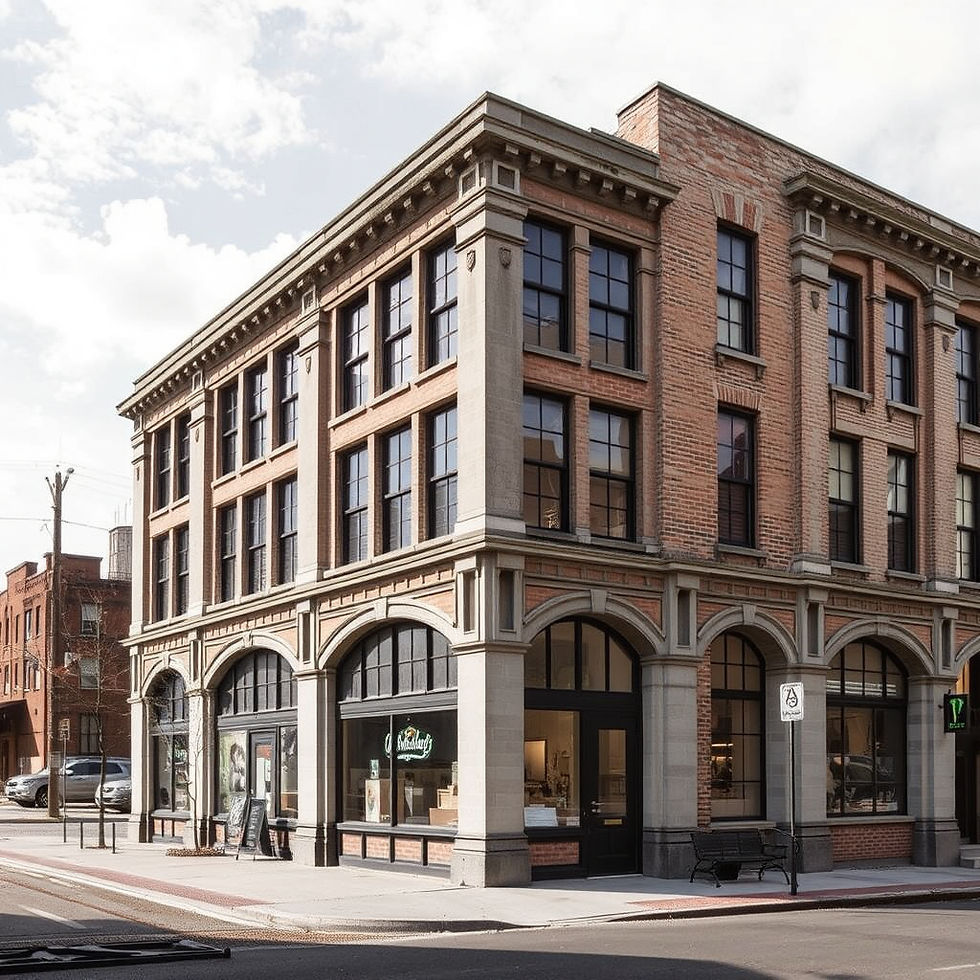AI and Architecture
- Phase Zero
- Oct 6
- 3 min read
Updated: Oct 11
The world of architecture is experiencing a seismic shift. Artificial Intelligence (AI) is no longer a distant concept—it’s an active force transforming how buildings are conceived, designed, and managed. From automating repetitive tasks to generating visionary concepts, AI is reshaping architectural practice in ways that are both innovative and deeply human-centered.
1. Generative Design: Beyond Human Imagination
One of AI’s most transformative applications in architecture is generative design.
Using algorithms and machine learning, architects can input parameters—such as site orientation, materials, cost, and energy performance—and let AI generate thousands of design possibilities.
This process expands creative potential, allowing professionals to test structural, spatial, and aesthetic variations that would be impossible to explore manually.
The result is a new design partnership: human intuition meets machine precision.
2. Data-Driven Design Decisions
AI allows architects to make evidence-based design decisions by analysing vast datasets on energy performance, climate, and user behavior.
Predictive analytics can simulate how a building will perform over time—optimising natural light, airflow, and carbon emissions before a single brick is laid.
These insights enable smarter planning, helping designers balance beauty, sustainability, and function.
3. Sustainable Architecture Through AI
Sustainability is at the heart of modern design, and AI is becoming a powerful tool in achieving net-zero and post-carbon architecture.
AI systems can identify energy-efficient materials, circular construction methods, and optimal renewable energy integration.
Machine learning models can even predict maintenance needs to extend a building’s lifespan and reduce waste.
Through real-time environmental monitoring, architects are now able to design ecosystems that adapt dynamically to their surroundings.
4. Smart Construction and Automation
In construction, AI is enabling precision, speed, and safety.
Robotics and AI-driven machinery automate repetitive tasks, reduce human error, and enhance on-site coordination.
Drones and sensors track progress, detect structural anomalies, and ensure compliance with safety standards.
The result: faster, cost-efficient, and more sustainable construction processes.
5. Enhanced Visualization and 3D Modelling
AI-powered visualization tools are revolutionizing the design process.
Architects can now use real-time rendering, VR walkthroughs, and AI-enhanced imagery to bring concepts to life with stunning realism.
AI also assists in automatically generating BIM models, simplifying project management and collaboration across disciplines.
6. Predictive Urban Planning
Beyond buildings, AI is transforming how we design cities.
Urban planners use AI to analyse traffic patterns, environmental data, and population growth to create resilient, sustainable communities.
Machine learning models help simulate energy use, green infrastructure, and mobility systems, guiding the evolution of smart, post-carbon cities.
7. Personalization and Human Experience
AI is enabling architects to design spaces that respond intuitively to human needs.
From adaptive lighting and temperature control to user-responsive layouts, buildings are becoming living systems that learn from occupants’ behavior.
This creates environments that are emotionally attuned, efficient, and inclusive—the ultimate fusion of technology and empathy.
8. The Future: Human Creativity Enhanced by AI
Despite the rise of automation, AI will not replace architects—it will amplify human creativity.
The architect’s role is evolving from designer to curator of possibilities, guiding AI-driven processes with cultural, emotional, and ethical insight.
The most successful designs will come from collaboration between human imagination and digital intelligence.
Conclusion
AI is redefining architecture—not by replacing the designer, but by expanding the boundaries of what design can achieve. It empowers architects to create smarter, more sustainable, and more human-centric spaces, where every decision is informed by data yet driven by creativity.
As we move deeper into the digital age, the future of architecture lies not in choosing between art and algorithm—but in mastering the synergy between the two.



